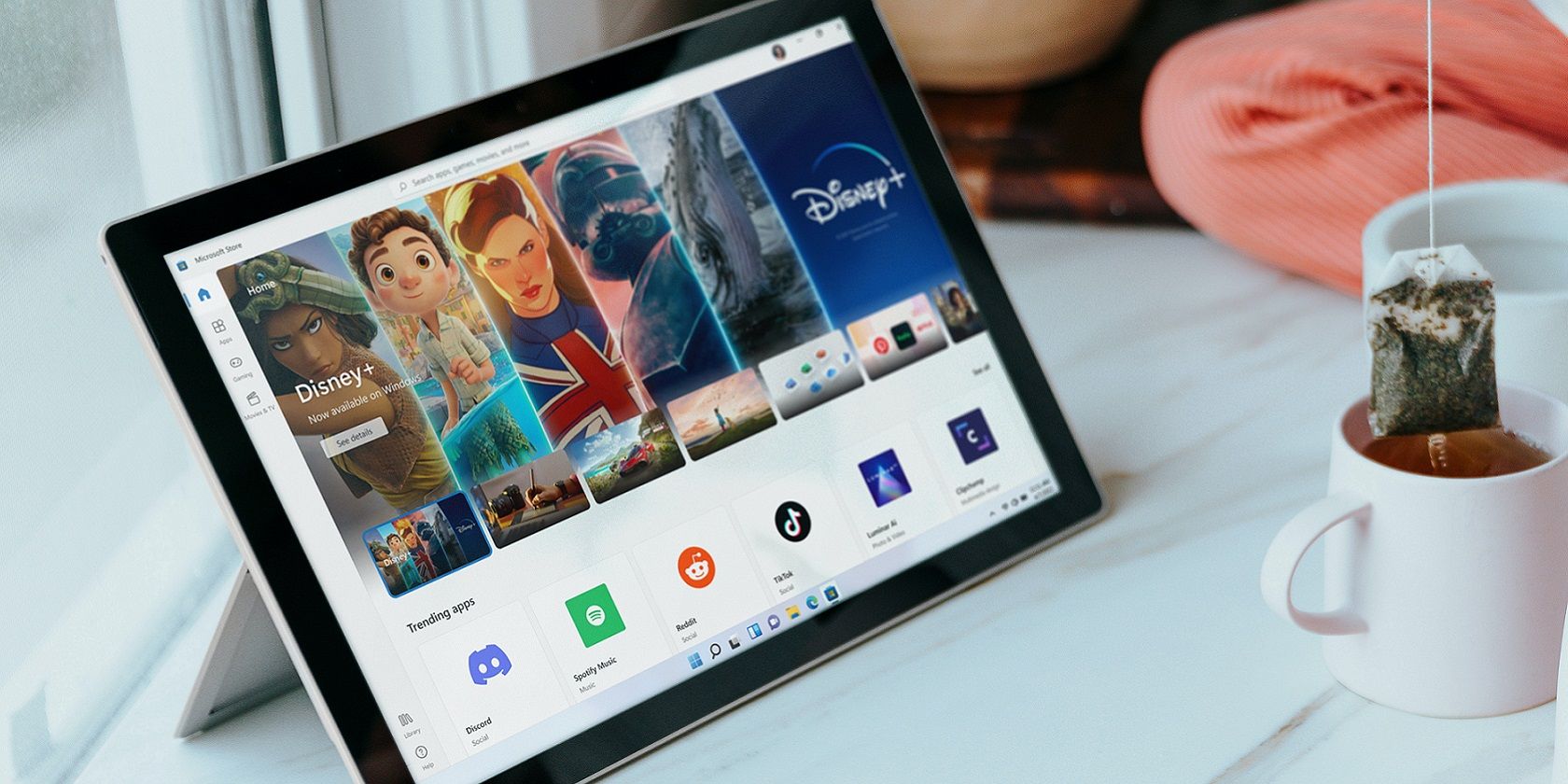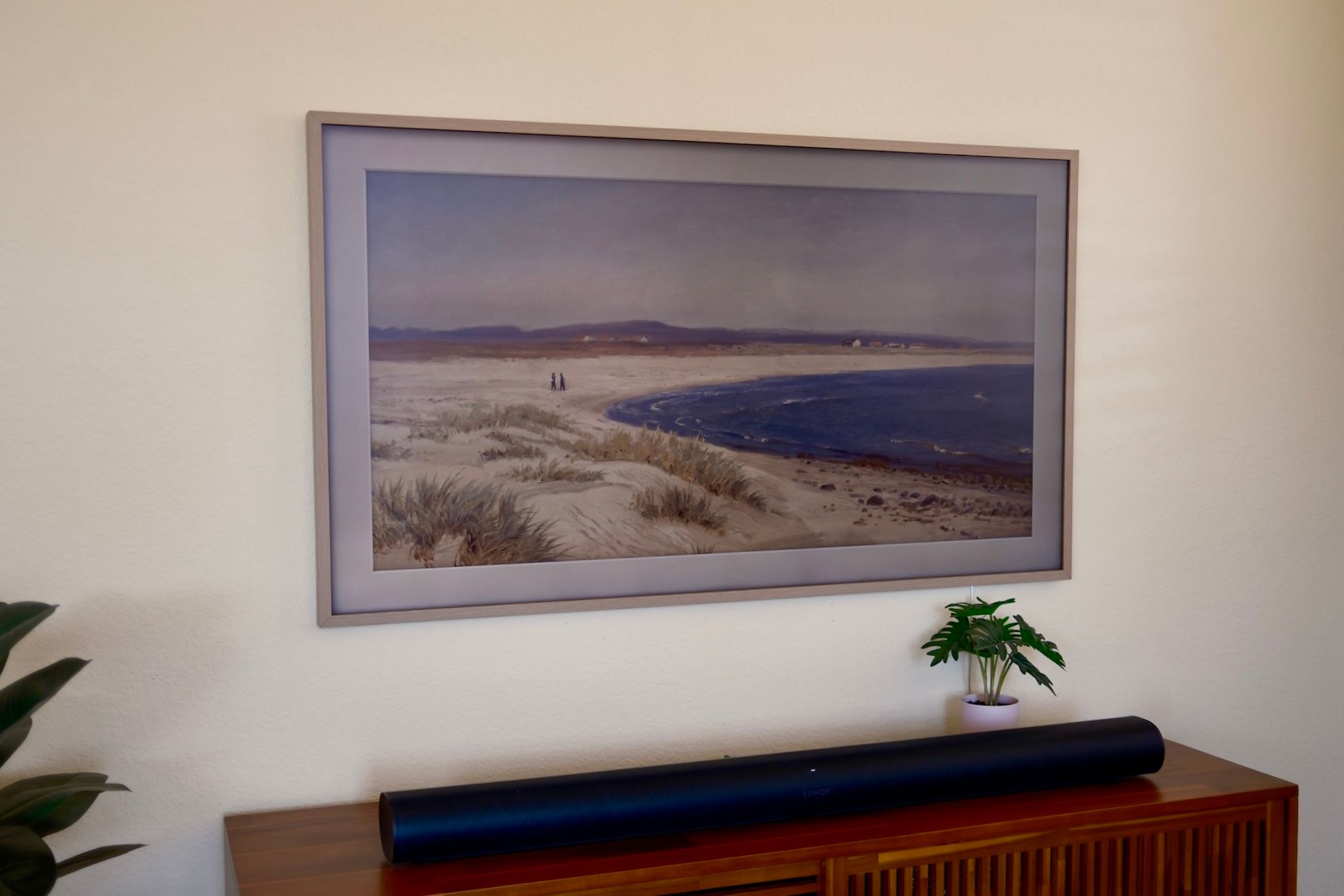
Embracing Imperfections: How Much I Adore My Samsung Frame Despite Its Shortcomings

Embracing Imperfections: How Much I Adore My Samsung Frame Despite Its Shortcomings
Quick Links
- Why I Traded an OLED for The Frame (The Good)
- The Times I Regret My Decision (The Bad)
- The Future of The Frame TV and Art TVs (The Indifferent)
Samsung’s The Frame TV is a traditional 4K television when it’s on and displays art when it’s off. It eliminates the huge void on the wall when no one is watching it. The issue is that it’s not very good at the TV part. Let me walk you through my experience and explain why it can be maddening even though I love it.
Why I Traded an OLED for The Frame (The Good)
If you’re considering buying a Frame TV, then presumably, you’re curious about its “off” art mode. From certain angles and with the right lighting, it can be hard to distinguish from an actual framed piece of art.
I first went hands-on with the 2021 The Frame for Newsweek . It was undeniably neat at the time. There are even wood-looking exterior pieces that can dramatically change the visual appearance of the whole display. I was tempted by what Samsung was selling back then but managed to resist my own purchase because I had an LG OLED TV on my living room wall already.
Three or four years ago, OLED was the peak of in-home consumer cinema—at least without setting up a projector system. I loved the deep blacks and bursting colors that my LG TV provided.
The calculation changed, however, in 2022 when Samsung ever-so-slightly updated The Frame to have a matte display with fantastic anti-glare technology. I then tested that model in my bright, sun-filled living room and just couldn’t get over how I could actually see it in the daytime. I could sit in the best spot on the couch and not have to duck or twist to find a spot where I could see the picture between the sun’s rays.
As good as the OLED TV was, I couldn’t fully appreciate it until night, when it was dark outside. Even then, sometimes certain house lights would reflect off the screen.
So, I took the plunge and swapped the best-looking TV I had ever owned for one that I could see better in my particularly bright room. The side benefit was that it was going to be a piece of decor when I wasn’t watching it.
Now, instead of a black mirror hanging on the wall in the morning when I come downstairs, I’m greeted with a piece of art. It’s not just any art either. It’s a different piece all the time. I can match the image to the current season. I can change the mood of the room with a new photo on the screen.
If I get bored with the exterior teak frame around the TV, I can swap that too for another over-priced Samsung one or a fancy one from a third-party seller.
The Frame sits practically flush against the wall so it takes up less space in the room. It uses a One Connect Box for all the inputs and power. So, even without cutting holes in the wall, all the connections to the TV go through a single clear cable that’s nearly invisible. The box has the added benefit of being accessible to plug new devices in without needing to go behind the TV.
It’s all fantastic until I watch a show or movie and am reminded that it could look even better.
The Times I Regret My Decision (The Bad)

Tyler Hayes / How-To Geek
The frustrating part with The Frame TV is that Samsung seemingly has no interest in furthering its technical capabilities. The screen uses really old technology.
Innovation has slowed to a crawl with the product. For starters, it’s incredibly difficult to tell how yearly models are different from each other, or even when a new model is released. This is particularly evident when searching different Frame-related forums where newcomers looking for clear answers are confounded by the smallest of tweaks. Is it worth getting the newest one or is it better to save money on an older model?
Specifically, the 2021, 2022, 2023, and 2024 Frames are all really similar. Save for the introduction of the anti-glare capability, which doesn’t improve the on-screen picture, it’s hard to tell a difference. I spent a lot of time combing through spec pages to confirm this and was still surprised by the lack of changes to this consumer product. Other TVs, even from Samsung, are still evolving at a decent clip.
The latest model of The Frame, primarily distinct by the image of roses on the screen, is an edge-lit LED panel. In 2024, and for TV tech, it’s downright primitive compared to modern backlighting techniques. Maybe the biggest insult is that this year’s 65-inch Frame TV still retails for an absolute premium of $1,999.99.
For comparison, a 65-inch Sony Bravia X90L features full-array local dimming with a 120Hz refresh rate and retails for $1,299.99.
It’s not just the raw specs either. The manifestation of the old backlighting technology is that the screen is less bright and there are often noticeable splotches. In light and dark scenes particularly, the unevenness is fairly evident. It can be distracting.
This isn’t to say movies or shows are unwatchable, but you’re paying top dollar to get mediocre results—all in service of a mostly convincing art mode.
The Future of The Frame TV and Art TVs (The Indifferent)
The thought process of whether to purchase The Frame could run you in circles if you consider it too long. For example, don’t you watch most of your video content on an iPad or phone anyway? So why do you need a big TV on the wall? You probably still want to watch some shows or movies on a big screen though, so you should have a TV. But do you prioritize the look of the TV when it’s off or when it’s on?
Again, trying to figure out the answers to some of these contradictory questions will drive you crazy. That’s the whole premise of this article’s contradictory title. I love this TV even though I don’t. No one should buy it for watching TV even though most people will be content with its results.
The biggest question I wish I could answer is why aren’t there higher-quality TVs that also do art modes when they’re off. Samsung’s Frame TV debuted in 2017, so other manufacturers have had time to catch up. But none have really tackled the product head-on.
Hopefully, that changes soon. On a bright note, Hisense recently announced its CanvasTV which does have an art mode.
(There are digital photo frames like the Aura Walden that make digital art look more analog, but those aren’t for watching TV or playing games.)
While the 2024 version of The Frame doesn’t move the needle technically, Samsung is at least aware that people love the idea of the product.
It has taken the same inspiration from the TV and put it into a speaker called the Music Frame . The speaker disguises its Dolby Atmos-capable audio behind a non-digital image that should blend in with your decor. Use the speaker with your TV or just cast music to it directly. Maybe even more Frame-type products will show up in the future. Let’s just hope their prices and capabilities are better aligned.
So should you buy a Frame TV? I wouldn’t recommend it. It’s not a great TV, but you’re going to love it.
Also read:
- [Updated] 2024 Approved Best of Both Worlds Exclusive 11 Bridge Camera Guide
- Are Budget-Friendly Wireless HDMI Converters Effective for Enjoying Games, Movies, and Presentations?
- Battle for Streaming Supremacy: How Apple TV Stacks Up Against Roku, Amazon Fire TV & Google TV
- Buying Guide: Choosing the Perfect Portable Laptop Monitor Now
- Can Low-Cost Wireless HDMI Dongles Deliver Quality Performance in Gaming, Cinema, and Slideshows?
- Choosing the Perfect Keyboard Companer for Your New Steam Deck: A Comprehensive Guide
- Exploring the Features of Asus's ProArt PA 329Q – The Ultimate Professional Display for 2024
- How can I play .mov files on Sony ?
- In 2024, How to Unlock Vivo S18e Bootloader Easily
- Must-Watch Live Games Top Nine Sites for 2024
- Simplify Your Workflow GoPro Quik Video Editing Made Easy on MacBook
- Title: Embracing Imperfections: How Much I Adore My Samsung Frame Despite Its Shortcomings
- Author: Kevin
- Created at : 2024-09-10 16:16:54
- Updated at : 2024-09-16 16:18:14
- Link: https://hardware-reviews.techidaily.com/embracing-imperfections-how-much-i-adore-my-samsung-frame-despite-its-shortcomings/
- License: This work is licensed under CC BY-NC-SA 4.0.
